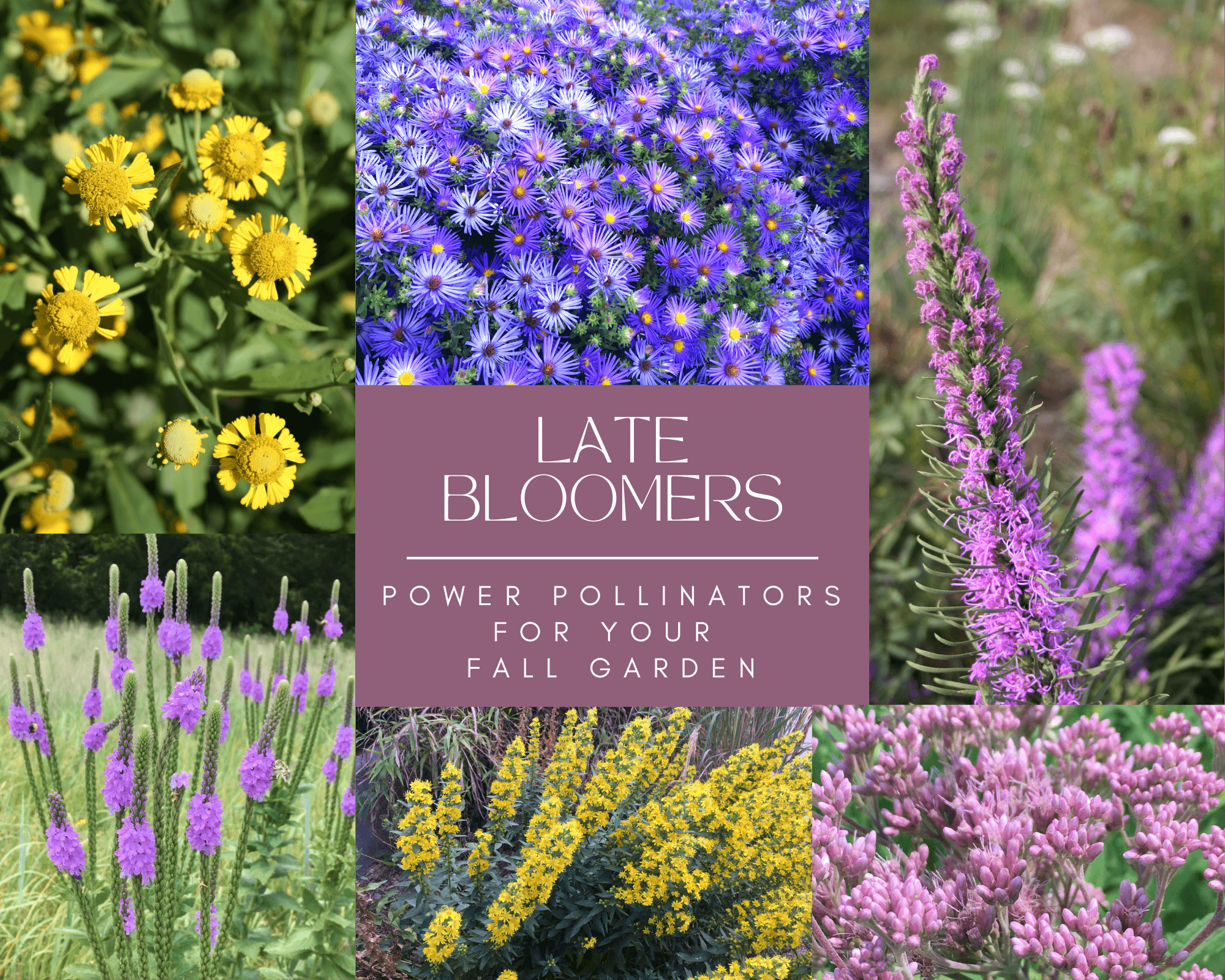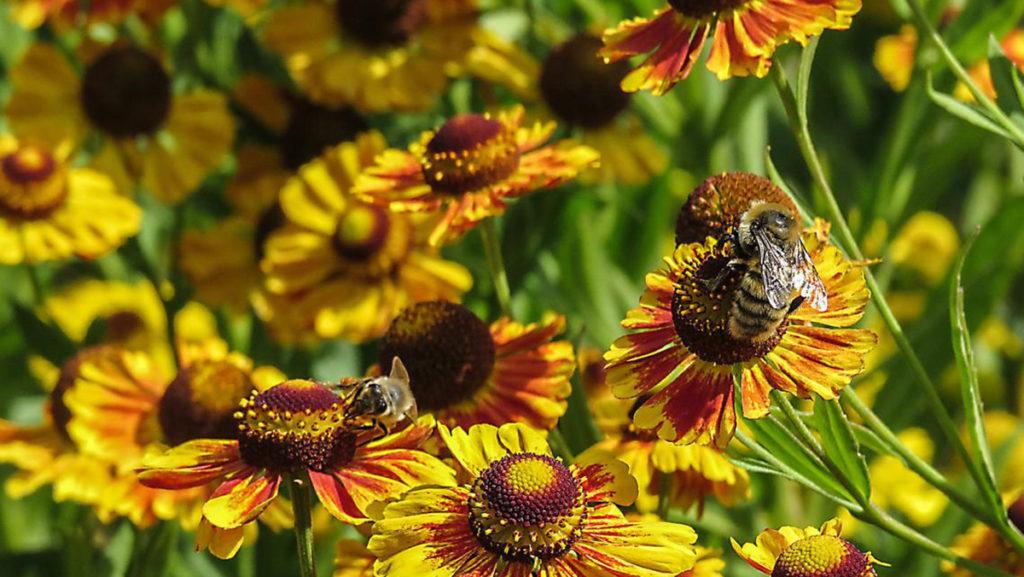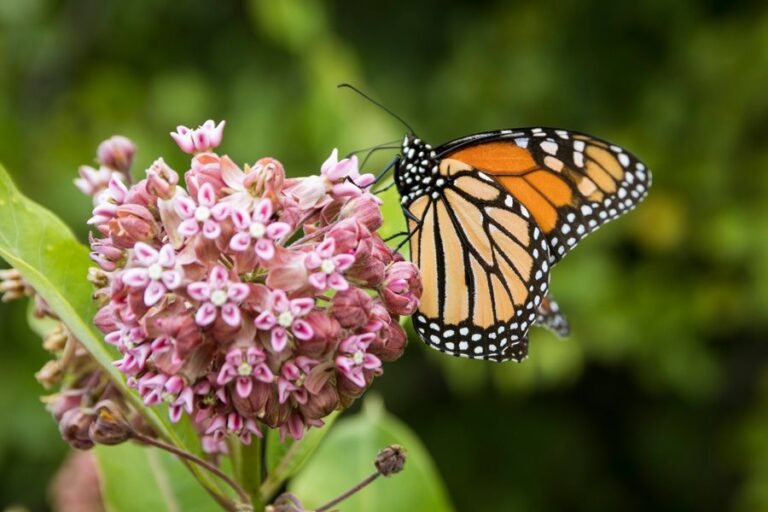As summer fades, your garden need not lose its vibrant colors or its buzz of life. Fall gardens can thrive with the right late-blooming plants that attract pollinators.
Imagine your garden, a lively haven for bees, butterflies, and birds, even as the air turns crisp. Late-blooming pollinator plants are the unsung heroes that keep this ecological dance going. They offer vital resources for pollinators preparing for colder months.
These plants not only sustain wildlife but also extend the beauty of your outdoor space. With careful selection, your garden can be a beacon of life in the fall. This post will explore plants that are both hardy and charming, perfect for gardeners who wish to enjoy a flourish of activity and color as autumn arrives. Get ready to discover the plants that ensure your garden remains a bustling paradise when others might be winding down.
Introduction To Fall Pollinators
As the days grow shorter and the crisp air of fall sets in, gardens begin to transform. While spring and summer blooms may fade, fall pollinators play a crucial role in the garden’s life cycle. This section delves into the vibrant world of late-season flowers and the pollinators that rely on them.
Importance Of Supporting Pollinators
Pollinators like bees, butterflies, and hummingbirds are vital to our ecosystem. They help plants reproduce by moving pollen from one flower to another. This process leads to the production of fruits, seeds, and the next generation of plants. In fall, certain plants bloom late, offering essential resources for these creatures as other food sources dwindle.
Challenges For Pollinators In Fall
As temperatures drop, pollinators face challenges. Food becomes scarce, and they must store energy for migration or overwintering. Late-blooming plants provide nectar and pollen when most other plants have ceased blooming. This makes them key to pollinator survival during this tough season.

Characteristics Of Late-blooming Plants
Autumn gardens shine with late-blooming plants. These plants offer vital support to pollinators preparing for winter. Unique traits make them stand out. They thrive as the days grow shorter and the temperatures drop.
Adaptations For Cooler Weather
These plants have special features for the cold. Thicker petals and robust roots are common. They withstand frost and use less sunlight. This lets them bloom late into the fall season.
- Sturdy stems resist brisk winds
- Dense foliage protects against chill
- Delayed dormancy extends the bloom period
Color And Fragrance Traits
Late bloomers have vibrant colors. Yellows, purples, and reds dominate. Bright flowers attract pollinators. Fragrances are stronger too. They lure bees and butterflies from afar.
| Color | Fragrance | Pollinators Attracted |
|---|---|---|
| Rich purples | Sweet and strong | Bees |
| Bold yellows | Light and airy | Butterflies |
| Deep reds | Earthy and deep | Hummingbirds |
These plants ensure fall gardens are lively. They offer food sources for insects. Their resilience makes them perfect for colder climates.
Top Pollinator Plants For Late Season
Let’s talk about the Top Pollinator Plants for Late Season. These plants help bees, butterflies, and other pollinators. They are perfect for fall gardens. Your garden will look beautiful and help nature too.
Asters: Stars Of The Autumn Garden
Asters bloom in late summer and fall. They bring color when other flowers fade. Asters come in many colors like purple, blue, and white. They are easy to grow. Asters make your garden lively and attract many pollinators.
- Colors: Purple, blue, white
- Bloom Time: Late summer to fall
- Benefits: Attract bees and butterflies
Goldenrods: A Golden Gift For Pollinators
Goldenrods light up the garden with their bright yellow flowers. They bloom in late summer and fall. Goldenrods are not the cause of allergies. They are important for pollinators. Many insects visit these plants for food.
| Feature | Detail |
|---|---|
| Color | Yellow |
| Bloom Time | Late summer to fall |
| Benefits | Food for bees and butterflies |

Benefits Of Planting For Pollinators
As autumn nears, gardeners often consider plants that offer late-season blooms. These plants are vital for pollinators preparing for winter. Planting for pollinators brings many benefits to the garden and the environment.
Ecosystem SupportEcosystem Support
Plants that flower in fall provide essential support for pollinators. Bees, butterflies, and birds rely on these resources to survive colder months. A garden rich in late-blooming plants ensures that these creatures find the nectar and pollen they need.
- Boosts bee and butterfly populations
- Supports local wildlife
- Helps maintain ecological balance
Garden Aesthetics And Biodiversity
A garden with a variety of blooming plants is visually stunning. It also supports a wider range of animal species. Diversity in plants leads to diversity in pollinators and other garden visitors.
| Plant Type | Benefits |
|---|---|
| Asters | Attracts late-season butterflies |
| Goldenrod | Supports bees with ample pollen |
| Sedum | Provides nectar for hummingbirds |
Each plant adds unique beauty and ecological value to the garden. With thoughtful selection, a fall garden can become a haven for pollinators and a place of continuous bloom.
Designing Your Fall Pollinator Garden
As summer fades, your garden can still buzz with life. Fall pollinator gardens offer vital resources for bees, butterflies, and other pollinators prepping for winter. A well-designed garden provides a haven for these creatures and a vibrant display for you to enjoy.
Plant Diversity And Placement
A diverse plant selection supports a variety of pollinators. Here’s how to get it right:
- Choose native plants – they’re best for local wildlife.
- Mix plant types – combine perennials, shrubs, and trees.
- Vary flower shapes – cater to different pollinator species.
Think about placement. Group same-species plants together. This helps pollinators find and move between blooms with ease. Ensure each group has at least three to five plants.
Creating Continuous Bloom
Continuous bloom is key for a fall garden. It means always having some plants in flower. To achieve this:
- Research bloom times. Look for late-season flowers.
- Include plants like asters, goldenrods, and sedum. They bloom into fall.
- Plan for succession. When one plant’s flowers fade, another’s begin.
With these steps, your garden will feed pollinators all season. Your effort creates a lively and colorful fall display!

Caring For Late-blooming Plants
Caring for late-blooming plants keeps your garden lively into fall. These plants need special attention. Let’s see how.
Watering And Fertilization Needs
These plants have unique needs. It’s important to get it right.
- Water deeply but not too often. Check soil moisture.
- Fertilize lightly. Use a balanced mix. Do this in early fall.
Preparing For Winter
Getting plants ready for cold is key. Here’s what to do:
- Trim dead parts. Helps plants focus on healthy growth.
- Add mulch. Keeps roots warm. Use straw or leaves.
- Protect from frost. Cover with a cloth on very cold nights.
Common Challenges And Solutions
As fall approaches, your garden’s late bloomers play a crucial role in supporting pollinators. Yet, these plants face unique challenges. Let’s explore some key obstacles and their effective solutions.
Pest Management
Pests love your fall flowers as much as pollinators do. They can harm plants, reducing their ability to bloom.
- Regular Inspections: Check plants often for pest signs.
- Natural Predators: Attract birds and beneficial insects to eat pests.
- Organic Sprays: Use neem oil or insecticidal soap to control infestations.
Dealing With Early Frosts
Frost can damage or kill late-blooming plants. Protecting them is key to preserve your fall garden.
- Cover Plants: Use frost cloths or blankets at night.
- Watering: Keep soil moist, it holds heat better.
- Mulching: Add mulch to insulate roots from cold.
Community Impact
Planting late-blooming pollinator plants benefits the whole community. These plants provide essential food for bees, butterflies, and other pollinators as summer ends. By adding these plants to fall gardens, communities can help local ecosystems thrive.
Encouraging Neighborhood Pollinator Gardens
Start a movement in your neighborhood. Share seeds and plant cuttings. Show how vibrant gardens attract helpful pollinators. Together, we can create a network of gardens. They offer vital resources to pollinators during the fall.
- Create a map of local gardens.
- Organize plant swaps.
- Host garden tours.
Educational Opportunities And Outreach
Use gardens as learning spaces. Teach others about the importance of pollinators. Reach out to schools and community centers. Offer workshops on sustainable gardening. Inspire future generations to care for our environment.
- Partner with local educators.
- Develop informative materials.
- Plan hands-on garden activities.
Resources For Gardeners
Finding the right plants for your fall garden is essential. Especially plants that bloom late and help pollinators. Here are resources to help gardeners find these plants.
Local Plant Nurseries And Societies
Local nurseries are great for finding plants. They know what grows well in your area. They can suggest late-blooming plants for your garden. Visit them and ask for advice.
Gardening societies are also helpful. They are groups of gardeners. They share tips and plants. They might know about rare plants that bloom in fall. Join a local gardening society to learn more.
Online Guides And Plant Databases
Online guides offer a lot of information. They can tell you about many plants. Look for guides focusing on your area for the best advice.
Plant databases are websites with info about many plants. They tell you when a plant blooms and what it needs to grow. Use these databases to find plants that help pollinators in fall.
- Search for “plant database” online.
- Choose one that has info about your area.
- Look for late-blooming plants.
With these resources, finding the right plants is easier. You help your garden and the environment. Start searching today.
Frequently Asked Questions
What Are Late-blooming Pollinator Plants?
Late-blooming pollinator plants are species that flower in late summer to fall. They provide essential nectar and pollen for bees, butterflies, and other pollinators during a time when fewer floral resources are available. Examples include asters, goldenrods, and sedums.
Why Plant Late-blooming Varieties In Gardens?
Planting late-blooming varieties supports pollinators during the critical late-season when other plants have ceased blooming. This ensures a continuous food supply, helping pollinators prepare for winter and supporting biodiversity in your garden.
How Do Late-blooming Plants Benefit My Garden?
Late-blooming plants extend the flowering season, adding color and vibrancy to gardens as other plants fade. They attract and sustain pollinators, which play a crucial role in the health of your garden by pollinating other plants and contributing to ecosystem diversity.
Can Late-blooming Plants Survive Frost?
Many late-blooming plants are adapted to cooler temperatures and can survive light frosts. This resilience allows them to provide essential resources to pollinators even as the weather turns colder.
Conclusion
As autumn arrives, don’t let your garden fade away. Embrace the beauty of late-blooming pollinator plants. They keep your outdoor space vibrant. They also offer crucial support to bees and butterflies preparing for winter. Plant these fall bloomers and enjoy a lively garden full of winged visitors.
Your efforts will not only create a stunning view but also contribute to local ecology. So, grab your gardening tools and get ready for a fall full of color and life. Your garden and the environment will thank you.

